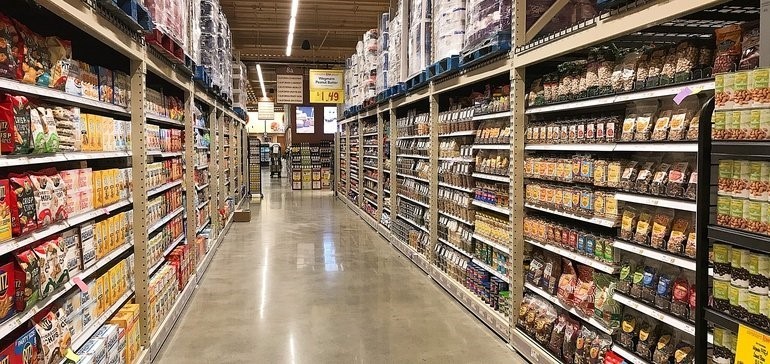Online grocery shopping quadruples since 2017

Catherine Douglas Moran/Food Dive
AUTHOR
Lauren Manning
PUBLISHED
March 31, 2021
SHARE IT
Dive Brief:
- The COVID-19 pandemic has led to a major spike in shopping online for groceries, according to a new survey of nearly 8,000 consumers from PowerReviews. More than six in 10 consumers say they shop for groceries online more now than they did pre-pandemic. Seventy-three percent of consumers have bought grocery items online during the past three months compared to only 17% during 2017.
- The accelerated adoption of online grocery shopping is being led by millennials, with eight in 10 making a purchase in the past three months, followed by 74% of Gen Z and 72% of Gen X. This compares to 60% of baby boomers.
- The chance to save time is driving 59% of consumers to shop online. This is followed by safety, or the desire to avoid COVID-19 exposure (49%) and avoiding impulse purchases (31%). Other reasons include the ability to easily compare products and prices (24%), getting product information and reviews (22%) and difficulty getting to a grocery store (20%).
·
Dive Insight:
Despite consumers’ newfound love for online grocery, in-store purchases are still thriving. The vast majority (95%) of those who shopped for groceries online during the past three weeks also made an in-store purchase in that timeframe, according to the PowerReviews survey.
Conventional grocers and big box stores saw the biggest increase in online grocery shoppers, jumping from 38% in 2017 to 65% in 2021. Only 22% are using digitally native sources like Amazon Fresh and Drizly, down from 39% four years prior. Third-party services such as Instacart (20%) and meal kits (15%) round out the bottom options.
Consumers also don’t seem to be tied to one online grocery outlet. About one-third use more than one service to buy groceries. This could be due to a variety of factors like product availability, location and prices.
The most commonly purchased item is nonperishable packaged foods such as canned soups, snacks and cereal (70%), which is up for 58% in 2017. Drinks such as juice, soda and bottled water are being bought by 58% of online grocery shoppers, up from 33% just four years prior.
Slightly over half (56%) of online shoppers are buying perishable foods such as meat, produce and dairy, an increase from 47% in 2017. This is noteworthy considering that one of consumers’ chief complaints against online grocery was concerns about spoilage or having strangers select their produce. And 54% of online grocery shoppers have purchased frozen foods, up from 32% in 2017.
Finally, 17% of online shoppers bought alcohol, up five percentage points from 2017. The pandemic has blown some wind into the segment’s sails as consumers have increased their overall alcohol consumption. A 2020 study from Kantar estimates that 30% of consumers who have tried purchasing alcohol online during the pandemic will likely continue to keep up the habit.
Online grocery isn’t preventing consumers from exploring new items, either. While some shoppers like online grocery because it prevents impulse purchases, 83% are open to buying things they haven’t tried before from an online grocer. The groups most likely to try a new item are millennials at 89% and Gen Z (87%).
And 58% report being equally as willing to buy a new grocery product online as they are in-store. Another 21% are more willing to try a new product online. The PowerReviews report pointed to the power of product reviews to capture consumers’ interest. More than half of online shoppers were interested in reviews for nonperishable packaged foods, followed by frozen foods (46%), fresh (42%) and beverages (40%).
Although consumers did not appear to be directly asked about their use of direct-to-consumer sites, their willingness to explore other e-commerce options is good news for major manufacturers like PepsiCo, Mondelez and Unilever, which have launched or refreshed purchasing platforms during the past year. PepsiCo has even organized offerings on its e-commerce site according to themes that fit current consumer trends like snacking, workout and recovery, and convenient breakfast items. This approach could satiate consumers’ appetite for saving time on their shopping while also exploring new products.
